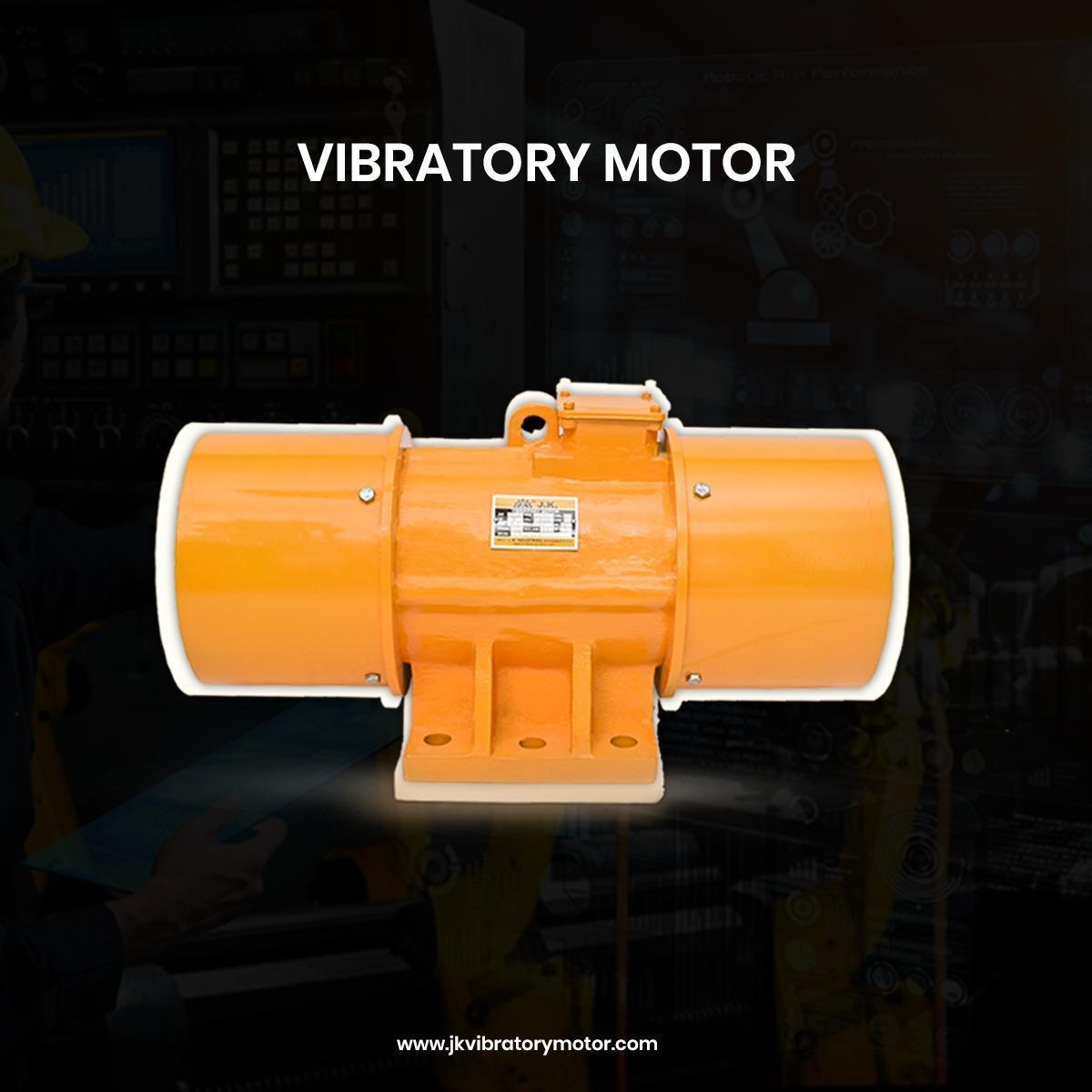Welcome to JK Industries
How Vibro Motors Improve Efficiency in Industrial Automation

How Vibro Motors Improve Efficiency in Industrial Automation
The manufacturing and industrial sectors are continuously evolving, driven by technological advancements that enhance productivity, reduce downtime, and optimize costs. One such innovation that has significantly contributed to industrial automation is the vibro motor. These powerful, precision-engineered motors play a crucial role in various industrial applications, offering efficiency, reliability, and cost-effectiveness.
In this comprehensive guide, we will explore how vibro motors work, their key applications, benefits, and why JK Industries, a leader among Vibro Motor Manufacturers in India, is at the forefront of this revolution.
Understanding Vibro Motors and Their Mechanism
A Vibro Motor, also known as a vibratory motor, is an electric motor designed to generate mechanical vibrations. It achieves this by rotating eccentric weights attached to both ends of the motor shaft, creating centrifugal force. This force induces vibrations, which can be harnessed for various industrial applications.
Key Features of Vibratory Motors:
Compact and robust design for heavy-duty applications
Low maintenance with high durability
Variable frequency and amplitude settings
Energy-efficient operation
Customizable options for specific industrial needs
Applications of Vibro Motors in Industrial Automation
The adaptability of vibratory motors makes them indispensable across numerous industries. Here are some of the primary applications:
1. Material Handling and Conveying
Industries such as mining, construction, and agriculture rely on Vibro motors to power vibratory feeders and screens. These motors facilitate the efficient movement of bulk materials, preventing blockages and enhancing throughput.
Mining Industry: Vibratory screens separate minerals based on size, improving sorting efficiency.
Construction: Vibrating conveyors transport cement, sand, and other materials efficiently.
Agriculture: Used in grain processing plants for sorting and grading.
2. Food Processing Industry
In food production, vibratory motors enable precise movement and handling of food products without causing damage.
Ensures uniform distribution of food particles in processing lines
Helps in quality control by removing unwanted elements
Used in vibrating sieves for separating contaminants from food products
3. Pharmaceutical & Chemical Industries
Precision and contamination-free processing are critical in the pharmaceutical and chemical sectors. Vibratory motors help maintain stringent quality control standards.
Used in tablet coating machines for uniform application
Facilitates precise powder mixing and sieving
Enhances drying processes by evenly distributing chemicals
4. Packaging Industry
In automated packaging systems, vibro motors help streamline the movement of goods on conveyor belts, ensuring accurate positioning, filling, and sorting.
Ensures even distribution of products in containers
Reduces spillage and packaging errors
Speeds up automated sorting and packing lines
5. Concrete Compaction
Construction sites extensively use vibratory motors in concrete compactors, which help remove air voids and improve the density of concrete structures.
Enhances the structural integrity of concrete
Reduces the likelihood of cracks and defects
Improves the longevity of buildings and infrastructure
Benefits of Incorporating Vibro Motors in Industrial Automation
1. Enhanced Operational Efficiency
By integrating vibratory motors into automation systems, industries can achieve faster and more precise operations. These motors facilitate consistent movement and sorting, significantly reducing manual intervention and labor costs.
2. Energy Efficiency and Cost Savings
Modern vibro motors consume less energy while delivering optimal performance. Their efficient design reduces power wastage, leading to lower operational costs and sustainable manufacturing.
3. Improved Precision and Quality Control
The ability to control vibration frequency and amplitude allows for precise handling of materials, ensuring uniform quality and reducing defects.
4. Reduced Downtime and Maintenance Costs
Designed for continuous operation under tough conditions, vibratory motors require minimal maintenance. Their durable construction ensures long service life, reducing unplanned downtime.
5. Versatility Across Industries
From mining to food processing and pharmaceuticals, vibratory motors can be adapted for a wide range of industrial applications, making them a valuable investment for businesses.
JK Industries: Leading the Vibro Motor Revolution in India
When it comes to sourcing high-quality vibratory motors, JK Industries is a trusted name among Vibrator Motor Manufacturers in India. With decades of experience, JK Industries has established itself as a leader in providing reliable and innovative vibration solutions.
Why Choose JK Industries?
Cutting-Edge Technology: Implements the latest advancements in vibration engineering to develop high-performance motors.
Custom Solutions: Offers tailored vibro motors to meet specific industrial requirements.
Superior Durability: Designs motors with high-grade materials for extended lifespan.
Energy-Efficient Designs: Focuses on reducing power consumption without compromising performance.
Exceptional Customer Support: Provides expert guidance for selecting the right motor for your application.
How to Select the Right Vibro Motor for Your Industrial Needs
Choosing the right vibratory motor depends on several factors, including:
1. Application Type
For bulk material handling: High-capacity vibratory motors with adjustable speed.
For food or pharmaceutical use: Hygienic, stainless steel motors with precise control.
For concrete compaction: Heavy-duty motors with high-frequency vibration.
2. Vibration Intensity & Frequency
Low-frequency motors are ideal for coarse materials.
High-frequency motors work best for fine materials and precision applications.
3. Power and Load Capacity
Ensure the motor has adequate power to handle the required load without excessive wear.
4. Environmental Conditions
Consider factors like temperature, humidity, and exposure to chemicals when selecting a motor.
5. Mounting and Installation Requirements
Choose motors that align with your existing system for easy installation and minimal modifications.
Future Trends in Vibro Motor Technology
The field of vibratory motors continues to evolve, with innovations focused on enhancing efficiency and performance. Some key trends include:
Smart Vibration Technology: Integration of IoT-enabled sensors for real-time monitoring and predictive maintenance.
Eco-Friendly Motors: Development of energy-efficient motors with reduced carbon footprint.
Advanced Material Engineering: Use of lightweight, high-durability materials to enhance motor lifespan.
- Plot No. 162, Road No. 4/A, Kathwada GIDC, Ahmedabad - 382430 Gujarat, India
- sales@jkvibratorymotor.com
- +91-9327053441

